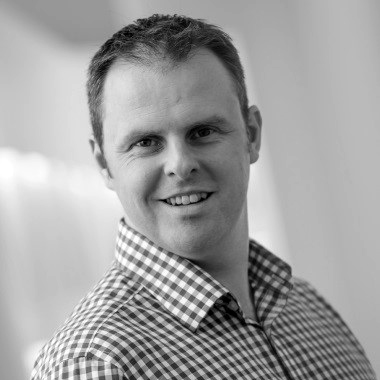To scale-up or scale-out? The challenge of commercialising cell therapies
on LinkedIn:
Regenerative medicine and cell therapies have long been hailed as the holy-grail of medical treatment. Treatments that use the patient’s own cells to fight disease or regenerate damaged tissues sound like science fiction, however in research institutions around the world this is exactly what is happening 1, 2. For now though, the challenge of commercialising such research into cost-effective mainstream treatments remains for the most part unmet.
Last month CDP joined the World Advanced Therapies and Regenerative Medicine Congress in London. The main theme of the conference was the challenge of commercialisation – and how new technologies and innovations could help move therapies from the research lab to the hospital. The number one topic of conversation from those we met was:
How do I scale my cell therapy to become commercially viable?
Cell therapies are broadly divided into two different categories depending upon where the cells are sourced from:
Autologous Therapies – using the patient’s own cells
Allogeneic Therapies – using cells from a donor
The allogeneic (off the shelf) therapies can expect to follow a business model similar to current biopharmaceuticals. A single batch of cells could be produced on a large scale that can provide multiple doses to treat a significant number of patients. This business model requires centralised scale-up to benefit from economies of scale to reduce the cost of treatment. There is significant existing knowledge and manufacturing know-how in scaling up biopharmaceutical processes so a scaled up allogeneic therapy would appear to be the easiest route to market.
Unfortunately scale-up is not just about making the reactor growing the cells bigger. In cell therapies, the therapeutic agent is the cells themselves. It is critical that the cells retain their appropriate phenotype and function to ensure the quality of the treatment. As the number of cells increase this can become increasingly challenging, as the greater cell numbers lead to increased chance of inhomogeneity of culture – and hence of cellular performance being altered. The greater volumes also introduce challenges of how to scale the harvesting process, downstream processing and formulation technology. Doubtless much work remains to demonstrate that these substantially biologically based challenges for scale up of allogeneic therapies can be successfully overcome.
The autologous (patient specific) therapies offer a new and exciting option to personalise and target treatment specific to the patient’s unique situation. This requires a new and exciting manufacturing process which is scaled-out to produce a single batch of therapy per patient, more locally to that patient. This means the cost of each batch cannot be reduced through traditional economies of scale and hence new manufacturing techniques are required to overcome cost barriers.
Generating a greater number of individual batches – each one specific to a single patient – brings about a range of additional logistical obstacles. First, cells must be harvested from the patient, who is already suffering compromised health, for example by extracorporeal blood filtration. The harvested cells then need to be transported from the hospital to a manufacturing facility, the cells are then processed (currently by highly trained scientists) before being cultured, purified, stored and shipped back to the hospital for administration – all the while retaining sterility and reliable traceability to the patient.
Reducing the cost of these autologous therapies must be achieved by advances in engineering and manufacturing technology. The number of complex and open-process steps that are common in research labs need to be reduced through the development of new automated technologies. This will allow multiple batches to be produced in parallel, with reduced burden of oversight by highly-trained scientists. These new processes must be GMP-compliant and closed for sterility.
For these autologous therapies the traditional model of centralised production breaks down. Since economies of scale seem unlikely to arise to enable the creation of a low-cost centralised production facility for these strictly individual therapies, there is no rationale for transfer of cells and therapies to and from a single location. Cost and time drivers for these transfers then become dominant, and will lead to cell processing being performed increasingly locally to the patient. This pressure towards increasing localisation is likely to reinforce the requirement for processing technologies to be capable of delivering reliable results without scientist oversight or with a single remote scientist reviewing multiple batches and sites – leading to a virtuous circle driving increasingly localised production and the likelihood of production taking place close to, or even on site at major hospitals.
Indeed as the only brake on localisation will be equipment utilisation and unnecessary overheads while not in use, over time the introduction of increasing numbers of therapy types will increase equipment utilisation per head of population and so drive production of certain therapies out to health centres and GP surgeries. However this has an associated increased cost of overheads so capacity must be accurately judged. Key to this whole development will be robust methods for achieving complete end-to-end traceability of the cell products, along with and monitoring of the status of the product to give confidence in performance.
So should I target scaling-up or scaling-out?
Currently it is not clear whether scale-up or scale-out commercialisation will become the norm as groups actively pursue therapies in both spaces. What is clear is that significant innovation will be required within this space to move from the current highly manual research and development processes to automated, appropriately-scaled systems which can produce therapeutic doses at a cost that allows these exciting therapies to reach the mainstream.
The traditional paradigm of coming up with a product concept and then throwing it over to the manufacturing “silo” for a different team to work out how to scale production will not work for these therapies. Final manufacturing process needs to be addressed from the start to ensure a therapy is developed which can be scaled to allow commercialisation.
CDP has experience in the development of innovative laboratory technology and bespoke GMP manufacturing processes. Alongside a growing team of biomedical engineers with experience in regenerative medicine labs, we are well placed to aid potential clients in navigating these process development and manufacturing challenges. If you would like to discuss how we can help, do please get in touch at hello@cambridge-design.co.uk.
1. https://ct.catapult.org.uk/sites/default/files/Clinical-trials-database-2016-1.pdf
2. https://www.fda.gov/biologicsbloodvaccines/cellulargenetherapyproducts/approvedproducts/

Mark Varley

Matt Brady
Partner